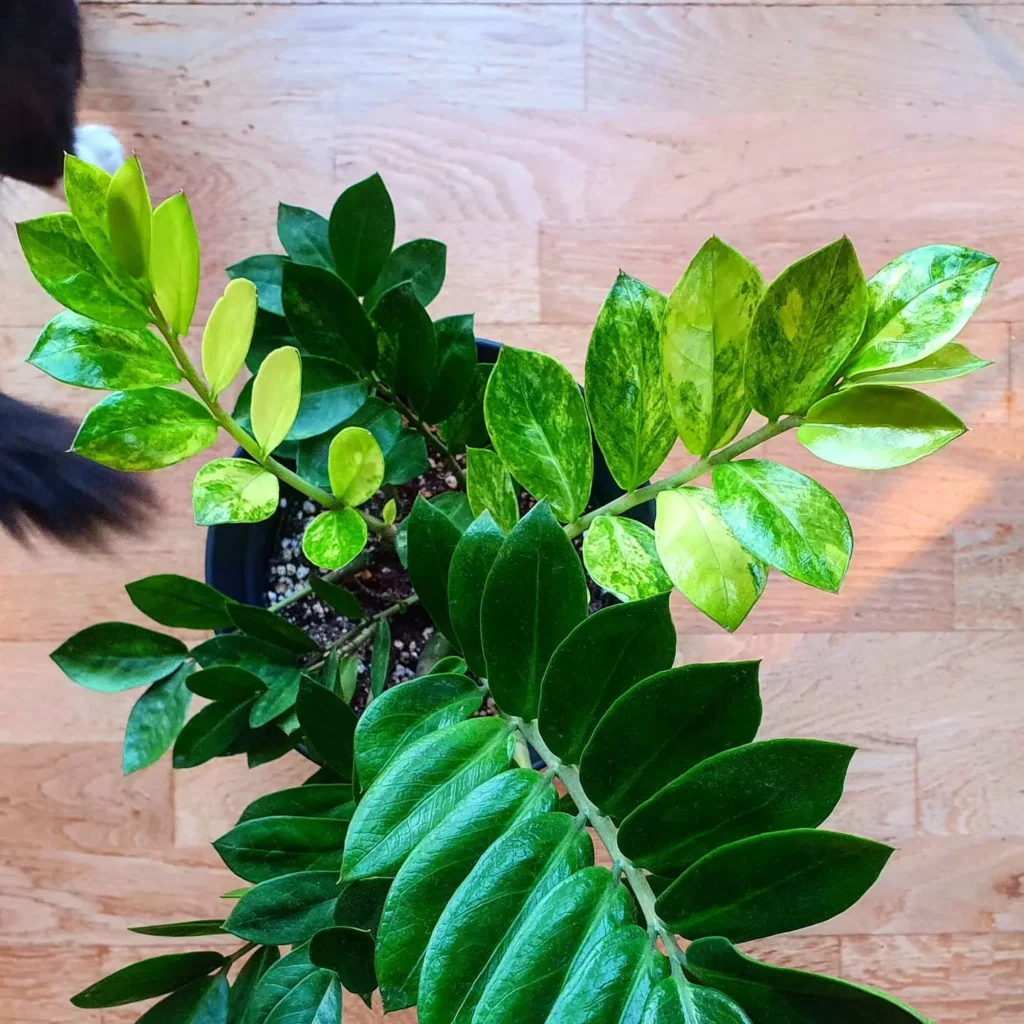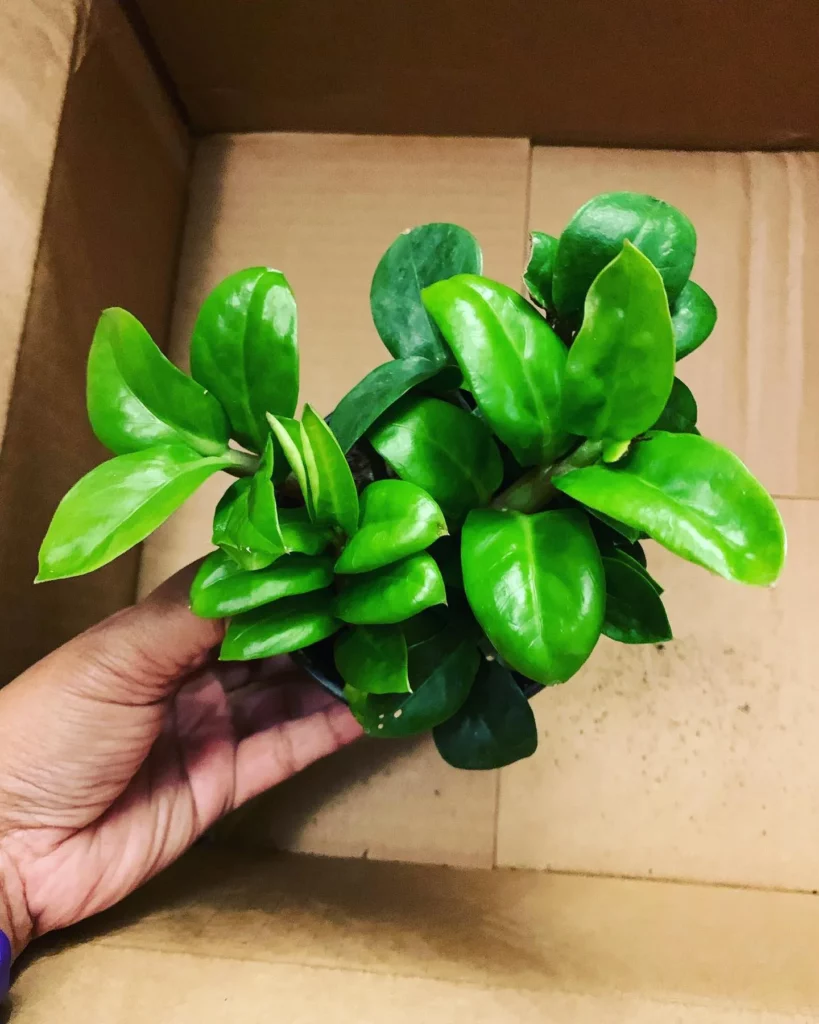ZZ plants are known to purify air by removing volatile organic compounds like xylene, toluene, and benzene from indoor environments.
ZZ Plants, renowned for their glossy, dark green leaves, are celebrated for their durability and ability to thrive in low-light conditions, making them a favored choice for indoor environments.
Despite debates about their air-purifying capabilities, they remain a popular choice for enhancing indoor aesthetics and improving air quality, although conclusive evidence is still under research. These plants are particularly valued for their minimal care requirements and their contribution to indoor humidity and mental well-being.
No products found.
The Debate Surrounding ZZ Plant Air Purification



The topic of ZZ Plant air purification has sparked a debate among experts, with conflicting opinions on its effectiveness in reducing toxins in the air.
Some studies suggest that houseplants, including ZZ Plants, can remove allergens and pollutants from indoor environments, improving air quality and promoting better health. These plants are said to absorb harmful gases such as formaldehyde, benzene, and xylene, which are commonly found in household products and can cause respiratory problems and allergies.
According to a study conducted by NASA in the late 80s, certain houseplants, including those with large leaves like ZZ Plants, were found to remove cancer-causing toxins from the air.
The research showed that plants can act as natural air purifiers by absorbing these toxins through their leaves and roots. This finding has led many to believe that ZZ Plants can effectively reduce indoor air pollution and create a healthier living environment.
However, critics argue that more research is needed to validate the air-purifying capabilities of ZZ Plants. They assert that the controlled conditions of the NASA study may not accurately represent the complexities of home environments, where factors such as temperature, humidity, and airflow can influence the effectiveness of air purification.
Additionally, the quantity of plants required to achieve significant air purification in a typical home may not be practical or feasible for most people.
No products found.
While the debate continues, it’s important to note that ZZ Plants offer additional benefits beyond potential air purification. They are known to increase humidity levels, which can be beneficial in dry indoor environments.
This can help alleviate dry skin, respiratory irritation, and other discomforts caused by low humidity. ZZ Plants also contribute to mental well-being, as studies have shown that being around plants can reduce stress, improve mood, and enhance productivity.
The NASA Clean Air Study and ZZ Plants

The renowned NASA Clean Air Study conducted in the late 80s shed light on the air-purifying properties of certain houseplants, including the ZZ Plant. The study aimed to identify plants that could effectively remove toxins from the air and create a healthier indoor environment.
According to the findings of the study, ZZ Plants, along with other plants with large leaves, were found to have the ability to remove cancer-causing toxins such as formaldehyde, benzene, and xylene from the air.
These toxins are commonly found in household items such as furniture, carpets, and cleaning products. By absorbing and metabolizing these harmful substances, ZZ Plants contribute to reducing indoor air pollution and improving air quality.
Although the NASA study provided valuable insights into the air-purifying capabilities of ZZ Plants, it is worth noting that some skeptics have raised criticism.
They argue that the controlled environment of the study may not accurately represent typical home conditions, where air circulation and pollutants may vary.
Criticisms and Limitations of Studies



Despite the positive findings from studies, critics argue that further research is needed to validate the effectiveness of ZZ Plants in combating indoor air pollution.
While the NASA Clean Air Study demonstrated the ability of certain houseplants, including ZZ Plants, to remove cancer-causing toxins from the air, skeptics point out limitations in the study’s methodology.
The controlled environment of the NASA study may not accurately reflect the conditions found in most homes. Critics argue that factors such as temperature, airflow, and varying levels of indoor pollutants can significantly impact the efficacy of plants in purifying the air.
It is important to consider these real-life conditions when assessing the potential benefits of ZZ Plants.
Another criticism is the quantity of plants required to effectively purify the air in a typical home. The NASA study suggested that around 15-18 medium-sized houseplants are needed for a 1,800 square foot home, which may not be practical or feasible for most people.
Maintaining a large number of plants can be challenging, especially for individuals with limited space or those who are not experienced gardeners.
Despite these criticisms, ZZ Plants offer other benefits that make them a popular choice for indoor greenery. They are known for their ability to increase humidity levels, which can be beneficial in dry environments.
Additionally, ZZ Plants have been shown to have a positive impact on mental health, promoting a sense of well-being and reducing stress. Their oxygen-releasing properties during the day also contribute to a healthier indoor environment.
Additional Benefits of ZZ Plants

While the effectiveness of ZZ Plants in reducing toxins in the air is still debatable, these houseplants provide numerous secondary benefits that make them a popular choice for indoor spaces.
One of the key advantages of ZZ Plants is their ability to increase humidity levels. They naturally release moisture into the air through a process called transpiration, which can help combat dryness in the environment.
Moreover, ZZ Plants have been found to have a positive impact on mental health. Studies have shown that indoor plants, including ZZ Plants, can help reduce stress and anxiety levels.
Being in the presence of greenery can create a calming effect and improve overall well-being. The low-maintenance nature of ZZ Plants also adds to their appeal, as they require minimal care and attention compared to other houseplants.
Additionally, ZZ Plants are known for their ability to release oxygen during the day through photosynthesis. This makes them ideal companions for bedrooms or other areas where fresh air circulation is desired.
The presence of ZZ Plants can contribute to a healthier indoor environment by increasing oxygen levels and reducing carbon dioxide accumulation.
Care and Maintenance of ZZ Plants



To enjoy the potential benefits of ZZ Plants, it is important to understand how to properly care for and maintain these resilient houseplants.
ZZ Plants are known for their ability to thrive in low-light conditions and withstand neglect, making them an ideal choice for busy individuals or those with less-than-green thumbs.
| Lighting | Watering | Fertilization | Pest Control | Propagation |
|---|---|---|---|---|
| Bright, indirect light | Allow soil to dry between waterings | Use diluted, balanced fertilizer every 2-3 months | Inspect for pests and treat as necessary | Division, stem cuttings, or leaf cuttings |
Conclusion

While ZZ Plants have been associated with air purification qualities, the current scientific evidence is inconclusive to definitively support their effectiveness in this regard.
ZZ Plants, also known as Zamioculcas Zamiifolia, have gained popularity as indoor plants due to their low maintenance requirements and resilience.
The question of whether these plants can purify the air has been a subject of debate among experts. Some studies suggest that houseplants can remove airborne toxins that may cause allergies and illness, while others argue that further research is necessary to substantiate these claims.
The NASA Clean Air Study conducted in the late 80s found that certain houseplants, including those with large leaves like ZZ Plants, were capable of eliminating cancer-causing toxins from the air.
However, critics raise concerns that the controlled environment of the study may not accurately reflect the conditions in most homes. Additionally, the quantity of plants required to effectively purify the air in a typical household may not be practical for many people.
Despite the ongoing debate, ZZ Plants offer additional benefits beyond air purification. They can help increase humidity levels, which is particularly beneficial for those living in dry climates.
The presence of indoor plants like ZZ Plants has also been linked to improvements in mental health and the release of oxygen during the day, contributing to a healthier indoor environment.
It’s worth noting that ZZ Plants are versatile when it comes to lighting conditions, making them suitable for various indoor spaces. They require less frequent watering compared to other plants, which is ideal for those who may not have a green thumb or prefer low-maintenance plants.
While ZZ Plants have been associated with air purification qualities, it is important to acknowledge that the current scientific evidence is insufficient to definitively support their effectiveness in this regard.
As research continues, it may provide further insights into the true abilities of ZZ Plants and their role in indoor air purification.
Make sure to check out our article on ZZ Plant Flowering: What Does It Mean And How To Care?. And after reading that ZZ Plant article, check out our article on How To Fertilize ZZ Plants For Lush Growth.
FAQ
Q: Do ZZ Plants purify the air?
A: The question of whether ZZ Plants have air purifying capabilities is still debated among experts. While some studies suggest that houseplants can remove toxins in the air that cause allergies and sickness, more research is needed to support this claim.
Q: What did the NASA Clean Air Study find about ZZ Plants?
A: The NASA Clean Air Study conducted in the late 80s found that certain houseplants, including those with large leaves like ZZ Plants, were able to remove cancer-causing toxins from the air. However, critics argue that the controlled environment of the study may not accurately reflect the conditions in most homes.
Q: What are the additional benefits of ZZ Plants?
A: Aside from air purification, ZZ Plants offer benefits such as increasing humidity levels, improving mental health, and releasing oxygen during the day.
Q: How do I care for and maintain ZZ Plants?
A: ZZ Plants are adaptable to various lighting conditions and require less watering than other plants, making them low maintenance. Place them in indirect or low light and water them sparingly, allowing the soil to dry out between waterings.





